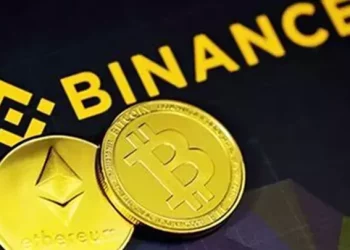Cryptocurrency trading has become a popular and lucrative activity, especially with the rise of platforms like Binance, one of the world’s leading cryptocurrency exchanges. Binance provides a platform for buying, selling, and trading cryptocurrencies with a wide range of supported coins and tokens. However, many traders wonder about the fees charged by Binance, which can significantly impact their profits and overall trading experience. In this article, we will dive deep into the fee structure of Binance, explaining the different types of fees involved and how they affect both casual and professional traders.
Introduction to Binance and Its Fee Structure
Binance was launched in 2017 by Changpeng Zhao, and it has grown into one of the largest cryptocurrency exchanges in the world. It offers a wide array of services, including spot trading, futures trading, staking, savings, and more. With its low fees, vast selection of cryptocurrencies, and strong security measures, Binance has attracted millions of users globally.
The fees Binance charges depend on various factors, including the type of service used, the user’s trading volume, and whether the user holds Binance Coin (BNB). Understanding these fees is crucial for traders to optimize their trading strategies and reduce the overall costs associated with trading on the platform.
Types of Fees on Binance
Binance charges different types of fees depending on the services you use. The primary types of fees include trading fees, withdrawal fees, deposit fees, and other miscellaneous charges. Each of these fees is structured in a specific way, and traders need to be aware of these details to ensure they are not overpaying.
Trading Fees
The most common fees on Binance are trading fees. These fees apply when you buy or sell cryptocurrencies on the platform. Binance uses a tiered system for calculating trading fees, which means the fee rate decreases as your trading volume increases.
Spot Trading Fees
For spot trading, Binance applies a maker-taker model. In this system, the maker is the person who adds liquidity to the order book by placing a limit order that does not get filled immediately, while the taker is the person who removes liquidity by placing an order that matches an existing order.
Standard trading fees: Binance’s default spot trading fee is 0.10% for both makers and takers. This means if you buy $100 worth of cryptocurrency, you would pay $0.10 in trading fees.
Discounts for higher trading volumes: Binance offers fee discounts for traders with higher 30-day trading volumes. The more you trade, the lower your fees will be. For example, a user with a 30-day trading volume of $50 million or more may pay as little as 0.02% for makers and 0.04% for takers.
BNB discount: Binance users can reduce their trading fees by paying with Binance Coin (BNB). This discount typically ranges from 25% to 50%, depending on whether you hold BNB and how much you use it to pay for fees.
Futures Trading Fees
Binance also offers futures trading, which involves buying or selling cryptocurrency contracts that settle in the future. Futures trading has a different fee structure from spot trading:
Standard futures fees: Binance charges a flat rate for futures trades. For both makers and takers, the standard fee is 0.02% and 0.04%, respectively.
Discounts for high-volume traders: Like spot trading, Binance also offers a fee discount for futures traders based on their 30-day trading volume.
BNB fee discount: Traders who use BNB to pay for futures trading fees also receive a discount on their fees.
Withdrawal Fees
Another type of fee that traders need to be aware of is the withdrawal fee. This fee is charged when you transfer your cryptocurrency from Binance to another wallet or exchange.
Cryptocurrency withdrawal fees: Each cryptocurrency has its own withdrawal fee, and this fee varies depending on the cryptocurrency. For example, withdrawing Bitcoin (BTC) from Binance might cost around 0.0005 BTC, while withdrawing Ethereum (ETH) could cost around 0.01 ETH. The withdrawal fee is determined by the network’s current conditions and the Binance platform’s policies.
Flat fee for certain coins: Some coins, such as Binance Coin (BNB), have fixed withdrawal fees regardless of network conditions. These fees are generally low compared to other coins, making BNB an attractive option for traders.
Deposit Fees
Fortunately, Binance does not charge fees for depositing cryptocurrencies. Whether you are depositing Bitcoin, Ethereum, or any other supported cryptocurrency, you will not incur any fees. However, when you deposit fiat money into your Binance account, there may be fees depending on the payment method used.
Fiat deposit fees: Binance charges different fees for fiat deposits based on the payment method. For example, if you use a bank transfer to deposit US dollars, you may be charged a small fee depending on the region and the type of transfer used.
Third-party fees: If you use a third-party payment processor to deposit funds into your Binance account (such as a credit card or a third-party wallet), additional fees may be applied by the processor, and these fees are not controlled by Binance.
Other Fees on Binance
While trading, withdrawal, and deposit fees are the main costs associated with Binance, there are other fees and charges that traders should be aware of:
Staking fees: If you participate in staking on Binance, where you lock up your cryptocurrency to support the network, you may incur staking fees. These fees are typically small, ranging from 0.1% to 1%, depending on the specific staking program.
Margin trading fees: Binance also offers margin trading, where you can borrow funds to increase your potential profits. For margin trading, Binance charges interest on the borrowed funds. This interest is calculated daily, and the rates vary depending on the cryptocurrency and the loan period.
Binance Fee Discount Programs
One of the main advantages of trading on Binance is the availability of fee discounts. Binance offers several ways for users to reduce their fees, making the platform more attractive for high-volume traders and long-term users. These discounts can be especially beneficial for those who trade frequently.
Using Binance Coin (BNB) for Fees
Binance Coin (BNB) is the native cryptocurrency of the Binance exchange, and holding and using BNB can give you a significant discount on trading fees. When you pay trading fees with BNB, you can save up to 50% off your standard trading fee.
How to use BNB for fee discounts: To take advantage of BNB discounts, users must enable the option to use BNB for fees in their Binance account settings. Once activated, Binance will automatically use your BNB balance to pay for trading fees.
BNB discount rates: Initially, Binance offered a 50% discount on trading fees for users who paid with BNB. Over time, however, the discount rate has been gradually reduced, with current discounts ranging from 25% to 10%, depending on the promotions available.
VIP Programs and Trading Volume Discounts
Binance’s fee structure is designed to reward users who trade more frequently or in higher volumes. The exchange uses a tiered system to determine the trading fees based on a user’s 30-day trading volume.
VIP Level System: Binance has a VIP program where users are ranked into different tiers based on their 30-day trading volume and BNB balance. Each VIP level offers progressively lower trading fees, starting from 0.10% for VIP 0 (standard users) and going down to 0.02% for VIP 9.
Volume-based discounts: As you trade more, you can unlock lower fees. For example, a trader with a 30-day volume of $1 million may qualify for a 0.08% maker and 0.10% taker fee, while a trader with $50 million in volume may qualify for even better rates.
How to Reduce Binance Fees
Reducing trading fees on Binance is possible through several strategies. Let’s look at some of the most effective ways to lower your costs.
1. Use BNB for Fee Payments
As mentioned earlier, paying your trading fees with Binance Coin (BNB) can result in a significant discount. To maximize your savings, consider using BNB for all your trading activities. You can either manually pay fees with BNB or set up automatic payments in your account settings.
2. Increase Your Trading Volume
Traders who engage in high-volume trading can enjoy reduced fees due to Binance’s VIP level system. If you plan to trade large amounts, aim to maintain a high trading volume to unlock the lowest fee tiers.
3. Participate in Promotions and Events
Binance frequently holds promotions, where users can earn fee discounts or even rebates for trading on the platform. By keeping an eye on Binance’s announcements and taking part in these events, you can reduce your overall trading fees.
4. Choose the Right Payment Method for Deposits
While Binance does not charge fees for cryptocurrency deposits, fiat deposits can incur costs depending on your payment method. By selecting a low-cost deposit option, you can avoid unnecessary fees when adding funds to your account.
Conclusion
Binance offers one of the most competitive fee structures in the cryptocurrency exchange industry. By understanding the various types of fees, such as trading fees, withdrawal fees, and deposit fees, traders can optimize their strategies and reduce their overall trading costs. Additionally, by using BNB for fee payments, increasing your trading volume, and participating in promotions, you can further minimize the fees associated with trading on Binance.
As Binance continues to grow and evolve, it remains an attractive platform for both beginners and seasoned traders. By staying informed about the latest fee updates and leveraging the available discounts, users can maximize their profits and enjoy a more cost-effective trading experience on Binance.
Related topics:

















